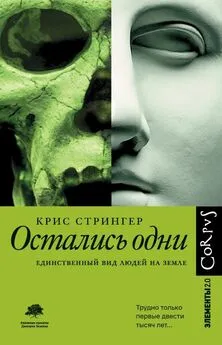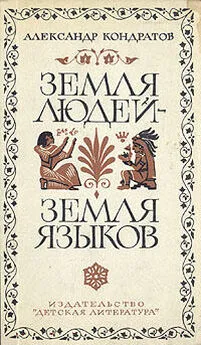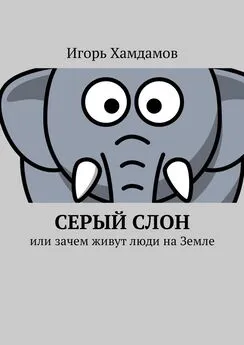Крис Стрингер - Остались одни. Единственный вид людей на земле
- Название:Остались одни. Единственный вид людей на земле
- Автор:
- Жанр:
- Издательство:Литагент Corpus
- Год:2021
- Город:Москва
- ISBN:978-5-17-982912-6
- Рейтинг:
- Избранное:Добавить в избранное
-
Отзывы:
-
Ваша оценка:
Крис Стрингер - Остались одни. Единственный вид людей на земле краткое содержание
Один из ведущих мировых специалистов, британский антрополог Крис Стрингер, тщательно собирает гигантский пазл, чтобы показать нам цельную картину: что на сегодняшний день известно науке о нас и о других представителях рода Homo, чего мы достигли в изучении своего эволюционного пути и куда движемся по нему дальше.
В формате PDF A4 сохранён издательский дизайн.
Остались одни. Единственный вид людей на земле - читать онлайн бесплатно ознакомительный отрывок
Интервал:
Закладка:
M. H. Wolpoff, A. ApSimon, C. B. Stringer, R. Jacobi, R. Kruszynski. “Allez Neanderthal”. Nature 289. 1981, 823–824.
J. Zilhao, E. Trinkaus, S. Constantin, S. Milota, M. Gherase, L. Sarcina, A. Danciu, H. Rougier, J. Quiles, R. Rodrigo. “The Peştera cu Oase people, Europe’s earliest modern humans”. In P. Mellars, K. Boyle, O. Bar-Yosef, C. Stringer, eds. Rethinking the Human Revolution , 249–63. McDonald Institute for Archaeological Research, Cambridge, 2007.
T. Akazawa, S. Muhehen, eds. Neanderthal Burials: Excavations of the Dederiyeh Cave, Afrin, Syria . International Research Centre for Japanese Studies, Kyoto, 2002.
P. G. Bahn, J. Vertut. Journey Through the Ice Age . University of California Press, Berkeley, 1997.
J. Balme, K. Morse. “Shell beads and social behaviour in Pleistocene Australia”. Antiquity 80. 2006, 799–811.
L. Barham. “Modern is as modern does? Technological trends and thresholds in the southcentral African record”. In P. Mellars, K. Boyle, O. Bar-Yosef, C. Stringer, eds. Rethinking the Human Revolution , 165–76. McDonald Institute for Archaeological Research, Cambridge, 2007.
L. Barham. “Systematic pigment use in the Middle Pleistocene of south-central Africa”. Current Anthropology 31. 2002, 181–190.
L. Barham, ed. The Middle Stone Age of Zambia, South Central Africa . Western Academic and Specialist Press Limited, Bristol, 2000.
O. Bar-Yosef Mayer, B. Vandermeersch, O. Bar-Yosef. “Shells and ochre in Middle Paleolithic Qafzeh Cave, Israel: Indications for modern behavior”. Journal of Human Evolution 56. 2009, 307–314.
A. Bouzouggar, N. Barton, M. Vanhaeren, F. d’Errico, S. Collcutt, T. Higham, E. Hodge, S. Parfitt, E. Rhodes, J.-L. Schwenninger, C. Stringer, E. Turner, S. Ward, A. Moutmir, A. Stambouli. “82,000-year-old shell beads from North Africa and implications for the origins of modern human behavior”. Proceedings of the National Academy of Sciences USA 104. 2007, 9964–9969.
R. W. Byrne. The Thinking Ape: Evolutionary Origins of Intelligence . Oxford University Press, Oxford, 1995.
R. W. Byrne, L. A. Bates. “Primate social cognition: Uniquely primate, uniquely social, or just unique?” Neuron 65. 2010, 815–830.
J. Clottes. Return to Chauvet Cave: Excavating the Birthplace of Art. The First Full Report . Thames & Hudson, London, 2003.
N. J. Conard. “Cultural evolution in Africa and Eurasia during the Middle and Late Pleistocene”. In W. Henke, I. Tattersall, eds. Handbook of Paleoanthropology , 2001–2037. Springer, Berlin, 2007.
N. J. Conard. “Cultural modernity: Consensus or conundrum?” Proceedings of the National Academy of Sciences USA 107. 2010, 7621–7622.
N. J. Conard. “A female figurine from the basal Aurignacian of Hohle Fels Cave in southwestern Germany”. Nature 459. 2009, 248–252.
N. J. Conard, M. Malina, S. Munzel. “New flutes document the earliest musical tradition in southwestern Germany”. Nature 460. 2009, 737–740.
S. Coulson, S. Staurset, N. Walker. “Ritualized behavior in the Middle Stone Age: Evidence from Rhino Cave, Tsodilo Hills, Botswana”. PaleoAnthropology. 2011, 18–61.
E. Culotta. “On the origin of religion”. Science 326. 2009, 784–787.
R. Dennell. “The world’s oldest spears”. Nature 385. 1997, 767–768.
F. d’Errico, H. Salomon, C. Vignaud, C. Stringer. “Pigments from the Middle Palaeolithic levels of Es-Skhul. Mount Carmel, Israel”. Journal of Archaeological Science 37. 12. 2010, 3099–3110.
R. I. M. Dunbar. “The social brain and the cultural explosion of the human revolution”. In P. Mellars, K. Boyle, O. Bar-Yosef, C. Stringer, eds. Rethinking the Human Revolution , 91–98. McDonald Institute for Archaeological Research, Cambridge, 2007.
R. I. M. Dunbar. “The social brain: Mind, language, and society in evolutionary perspective”. Annual Review of Anthropology 32. 2003, 163–181.
R. I. M. Dunbar. “Why are humans not just great apes?” In C. Pasternak, ed. What Makes Us Human , 37–48. Oneworld Publications, Oxford, 2007.
C. Gamble. Origins and Revolutions: Human Identity in Earliest Prehistory . Cambridge University Press, Cambridge, 2007.
R. Grun, C. Stringer, F. McDermott, R. Nathan, N. Porat, S. Robertson, L. Taylor, G. Mortimer, S. Eggins, M. McCulloch. “U-series and ESR analyses of bones and teeth relating to the human burials from Skhul”. Journal of Human Evolution 49. 2005, 316–334.
S. Harris, J. T. Kaplan, A. Curiel, S. Y. Bookheimer, M. Iacoboni, M. S. Cohen. “The neural correlates of religious and nonreligious belief”. PLoS ONE 4. 2009, e0007272.
J. Henrich. “The evolution of costly displays, cooperation and religion: Credibility enhancing displays and their implications for cultural evolution”. Evolution and Human Behavior 30. 2009, 244–260.
C. S. Henshilwood. “The ‘Upper Palaeolithic’ of southern Africa: The Still Bay and Howiesons Poort techno-traditions”. In S. Reynolds, A. Gallagher, eds. African Genesis: Perspectives on Hominid Evolution , 38–50. Wits University Press, Johannesburg, 2009.
C. S. Henshilwood, F. d’Errico, eds. Homo Symbolicus: The Origins of Language, Symbolism and Belief . University of Bergen Press, Bergen, in press.
C. S. Henshilwood, F. d’Errico, M. Vanhaeren, K. van Niekerk, Z. Jacobs. “Middle Stone Age shell beads from South Africa”. Science 304. 2004, 403.
C. S. Henshilwood, F. d’Errico, I. Watts. “Engraved ochres from the Middle Stone Age levels at Blombos Cave, South Africa”. Journal of Human Evolution 57. 2009, 27–47.
C. S. Henshilwood, F. d’Errico, R. Yates, Z. Jacobs, C. Tribolo, G. A. T. Duller, N. Mercier, J. Sealy, H. Valladas, I. Watts, A. G. Wintle. “Emergence of modern human behaviour: Middle Stone Age engravings from South Africa”. Science 295. 2002, 1278–1280.
C. S. Henshilwood, C. W. Marean. “The origin of modern human behavior: Critique of the models and their test implications”. Current Anthropology 44. 5. 2003, 627–652.
E. Hovers, S. Ilani, O. Bar-Yosef, B. Vandermeersch. “An early case of color symbolism. Ochre use by modern humans in Qafzeh Cave”. Current Anthropology 44. 2003, 492–522.
E. Hovers, Y. Rak, W. H. Kimbel. “Neanderthals of the Levant”. Archaeology 49. 1996, 49–50.
J.-J. Hublin. “Climatic changes, paleogeography, and the evolution of the Neandertals”. In T. Akazawa, K. Aoki, O. Bar-Yosef, eds. Neanderthals and Modern Humans in Western Asia , 295–310. Plenum, New York, 1998.
J.-J. Hublin. “The prehistory of compassion”. Proceedings of the National Academy of Sciences USA 106. 2009, 6429–6430.
A. Jerardino, C. W. Marean. “Shellfish gathering, marine palaeoecology and modern human behavior: Perspectives from cave PP13b, Pinnacle Point, South Africa”. Journal of Human Evolution 59. 3–4. 2010, 412–424.
R. G. Klein. “Out of Africa and the evolution of human behavior”. Evolutionary Anthropology 17. 2008, 267–281.
S. L. Kuhn, M. C. Stiner. “Body ornamentation as information technology: Towards an understanding of the significance of early beads”. In P. Mellars, K. Boyle, O. Bar-Yosef and C. Stringer, eds. Rethinking the Human Revolution , 45–54. McDonald Institute for Archaeological Research, Cambridge, 2007.
D. Lewis-Williams. The Mind in the Cave: Consciousness and the Origins of Art . Thames & Hudson, London, 2002.
S. J. Lycett, M. Collard, W. C. McGrew. “Phylogenetic analyses of behavior support existence of culture among wild chimpanzees”. Proceedings of the National Academy of Sciences USA 104. 2007, 45, 17588–17592.
C. W. Marean, M. Bar-Matthews, J. Bernatchez, J. Fisher, P. Goldberg, A. Herries, Z. Jacobs, A. Jerardino, P. Karkanas, T. Minichillo, P. J. Nilssen, E. Thompson, I. Watts, H. M. Williams. “Early human use of marine resources and pigment in South Africa during the Middle Pleistocene”. Nature 449. 2007, 905–908.
S. McBrearty. “Down with the revolution”. In P. Mellars, K. Boyle, O. Bar-Yosef, C. Stringer, eds. Rethinking the Human Revolution , 133–152. McDonald Institute for Archaeological Research, Cambridge, 2007.
S. McBrearty, A. Brooks. “The revolution that wasn’t: A new interpretation of the origin of modern human behavior”. Journal of Human Evolution 39. 2000, 453–563.
S. McBrearty, C. Stringer. “The coast in colour”. Nature 449. 2007, 793–794.
P. A. Mellars. “The impossible coincidence: A single-species model for the origins of modern human behavior in Europe”. Evolutionary Anthropology 14. 2005, 167–182.
P. A. Mellars. “Major issues in the emergence of modern humans”. Current Anthropology 30. 1989, 349–385.
P. A. Mellars. “Why did modern human populations disperse from Africa ca. 60,000 years ago? A new model”. Proceedings of the National Academy of Sciences USA 103. 2006, 9381–9386.
P. Mellars, K. Boyle, O. Bar-Yosef, C. Stringer, eds. Rethinking the Human Revolution . McDonald Institute for Archaeological Research, Cambridge, 2007.
P. A. Mellars, C. B. Stringer. “Introduction”. In P. A. Mellars, C. B. Stringer, eds. The Human Revolution: Behavioural and Biological Perspectives in the Origins of Modern Humans , 1–14. Edinburgh University Press, Edinburgh, 1989.
D. Morris. The Naked Ape . Jonathan Cape, London, 1967.
G. M. Morriss-Kay. “The evolution of human artistic creativity”. Journal of Anatomy 216. 2010, 158–176.
V. Mourre, P. Villa, C. S. Henshilwood. “Early use of pressure flaking on lithic artifacts at Blombos Cave, South Africa”. Science 330. 2011, 659–662.
A. Nowell. “Defining behavioral modernity in the context of Neandertal and anatomically modern human populations”. Annual Review of Anthropology 39. 2010, 437–452.
P. Pettitt. “The living as symbols, the dead as symbols: Problematising the scale and pace of hominin symbolic evolution”. In C. Henshilwood, F. d’Errico, eds. Homo Symbolicus: The Origins of Language, Symbolism and Belief. University of Bergen Press, Bergen, in press.
C. Power. “Society as congregation – religion as binding spectacle”. Radical Anthropology 1. 2007, 17–25.
G. Rizzolatti, M. Fabbri-Destro, L. Cattaneo. “Mirror neurons and their clinical relevance”. Nature Clinical Practice Neurology 5. 1. 2009, 24–34.
W. Roebroeks, J.-J. Hublin, K. MacDonald. “Continuities and discontinuities in Neandertal presence – a closer look at Northwestern Europe”. In N. Ashton, S. Lewis, C. B. Stringer, eds. The Ancient Human Occupation of Britain , 113–123. Elsevier, Amsterdam, 2011.
C. B. Stringer. Homo britannicus . Allen Lane, London, 2006.
C. B. Stringer, E. Trinkaus, M. Roberts, S. Parfitt, R. Macphail. “The Middle Pleistocene human tibia from Boxgrove”. Journal of Human Evolution 34. 1998, 509–547.
J. Svoboda. “The Upper Paleolithic burial sites at Predmosti: Ritual and taphonomy”. Journal of Human Evolution 54. 2008, 15–33.
H. Thieme. “Lower Palaeolithic hunting spears from Germany”. Nature 385. 1997, 807–810.
Читать дальшеИнтервал:
Закладка:










